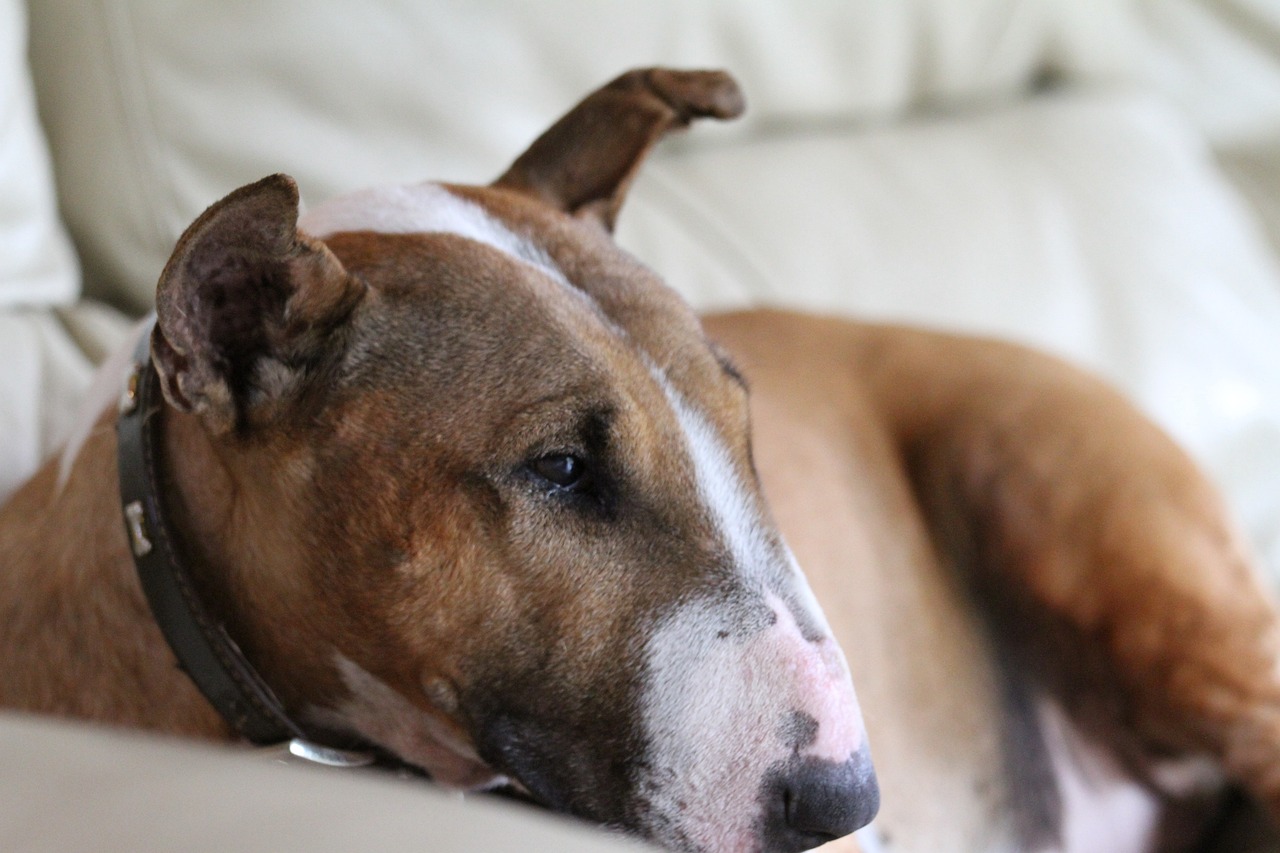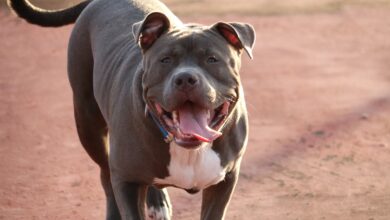What Were Bull Terriers Originally Bred For?

The Bull Terrier, with its unmistakable egg-shaped head and triangular eyes, is one of the most distinctive and instantly recognizable breeds in the canine world. Behind the unique appearance, there is a history deeply rooted in purpose-driven breeding, which offers a fascinating insight into the evolution of this breed.
1. The Early Beginnings of the Bull Terrier
In the early 19th century, the sports of bull-baiting and, subsequently, ratting were immensely popular in England. The blood sport required dogs that were agile, brave, and tenacious. The Old English Bulldog was robust and strong but lacked the agility desired for these pursuits. To create a more agile contender, Bulldogs were crossbred with the now-extinct White English Terrier, resulting in the “Bulldog-Terrier.” As the sports evolved and dog-fighting gained popularity, the Bull and Terrier mix became an integral participant, leading to the emergence of the early Bull Terrier.
2. James Hinks and the Refinement of the Bull Terrier
A pivotal figure in the history of the Bull Terrier is James Hinks. In the mid-19th century, Hinks undertook the task of refining the breed. His goal was not just to produce a dog fit for fighting but also to create a more standardized and aesthetically appealing breed. Hinks introduced the all-white coat, earning the Bull Terrier the nickname “White Cavalier.” Under his guidance, the Bull Terrier transitioned from a rough-and-tumble fighter to a more polished breed, which garnered admiration not just for its prowess in the ring but also for its appearance.
3. From Fighter to Companion: The Bull Terrier’s Changing Role
As the 19th century progressed, societal views began to shift. Blood sports, including dog fighting, were increasingly seen as barbaric and were eventually outlawed. This transition necessitated a change in the purpose of the Bull Terrier. The breed’s inherent loyalty, intelligence, and playful nature made it an excellent candidate for a companion dog. Over the decades, the Bull Terrier transitioned from the fighting pits to the living rooms of families, proving to be an affectionate and loyal pet.
4. The Introduction of Color in Bull Terriers
While the all-white Bull Terrier was a hallmark of the breed’s refinement under James Hinks, there were concerns about the health and temperament of an entirely white breed. As a result, in the early 20th century, breeders began to reintroduce color. By crossbreeding with the Staffordshire Bull Terrier, they introduced brindle, black, and tri-colored variations. This move not only diversified the breed’s appearance but also addressed some of the health concerns associated with the all-white variant.
5. Bull Terriers in Popular Culture
The distinct appearance and charming personality of the Bull Terrier did not go unnoticed in popular culture. From advertisements to movies, the Bull Terrier became a symbolic representation of both grit and charm. Their widespread appeal can be credited to their storied history, which combines tenacity with affection.
6. The Modern Bull Terrier: Show Rings and Family Homes
Today, the Bull Terrier is a staple in dog show rings across the world. Their unique appearance, combined with their spirited personality, makes them a favorite among judges and audiences alike. Beyond the show ring, the Bull Terrier has found a place in the hearts of countless families. Their playful demeanor, combined with their unwavering loyalty, makes them an excellent choice for households seeking a pet with both character and history.
Conclusion
The Bull Terrier’s journey from the fighting pits of 19th-century England to modern living rooms around the world is a testament to the breed’s adaptability and enduring appeal. As with many breeds, understanding its history offers invaluable insight into its character. The Bull Terrier is a product of both purpose-driven breeding and passionate stewardship, resulting in a breed that is as captivating in appearance as it is in spirit.
Frequently Asked Questions About Bull Terrier Breeding

1. What is the primary purpose of breeding Bull Terriers today?
Bull Terriers are primarily bred today for companionship and show purposes. Their unique appearance and lively personality make them favorites in the dog show circuit, and their affectionate nature makes them great family pets.
2. How often can a female Bull Terrier safely breed?
A responsible breeder will typically allow a female Bull Terrier to have litters only once a year, giving her body ample time to recover between pregnancies. Overbreeding can lead to health issues for the mother and the puppies.
3. What are the common health checks required before breeding Bull Terriers?
Before breeding, Bull Terriers should be screened for common hereditary health issues like deafness, heart problems, kidney disorders, and patellar luxation. Regular vet check-ups and obtaining health clearances can ensure that breeding dogs are healthy.
4. Are there different types or strains of Bull Terriers for breeding?
While Bull Terriers are a distinct breed, they come in two size variations: the standard Bull Terrier and the Miniature Bull Terrier. Both have similar temperaments, but their size differentiates them.
5. How can I ensure that a Bull Terrier puppy is from a responsible breeder?
Research and ask for references. A responsible breeder will prioritize health screenings, provide a clean environment for the dogs, and be knowledgeable about the breed’s history and needs. They should also provide proper documentation and pedigree information.
6. What is the typical litter size for Bull Terriers?
Bull Terriers typically have litters ranging from 5 to 10 puppies. However, the number can vary based on the individual dog and her health.
7. At what age can Bull Terriers start breeding?
It’s recommended to wait until a Bull Terrier is at least 18 to 24 months old before breeding. This ensures they are mature, both physically and mentally, and can safely carry and care for a litter.
8. How do I recognize a reputable Bull Terrier breeder?
A reputable breeder will be registered with national or regional breed clubs, follow ethical breeding practices, prioritize the health and well-being of their dogs, and be willing to answer any questions about the breed and their breeding practices.
9. Are Bull Terriers prone to any genetic disorders?
Yes, Bull Terriers can be predisposed to certain genetic disorders like deafness, heart issues, and patellar luxation. It’s crucial to work with breeders who screen their dogs for these conditions.
10. Why is socialization important for Bull Terrier puppies?
Socialization is crucial for Bull Terriers to ensure they grow up to be well-rounded, confident adults. Exposing them to various environments, people, and other animals during their formative weeks helps prevent aggressive or timid behavior later in life.
Benefits of Adopting a Bull Terrier from a Rescue or Shelter
Adopting a Bull Terrier from a rescue or shelter is a commendable decision. Rescued Bull Terriers often come with the advantage of being house-trained and having some basic obedience training. Additionally, adoption helps free up space in shelters for other needy dogs and gives a second chance to a Bull Terrier that might have been abandoned or mistreated. Moreover, adopting is a responsible way to combat overpopulation issues and ensures that one is not inadvertently supporting backyard breeders or puppy mills.




